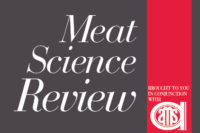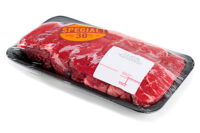Meat Science
Retail lighting and ground beef shelf life
Missouri researchers study retail lighting options in order to extend shelf life of ground beef.

Researchers at the University of Missouri are finding ways to extend the shelf life of ground beef.
They have found that store lighting plays a role in how long meat retains the bright red color that shoppers favor. After price, consumers consider color when buying meat.
MU meat scientist Bryon Wiegand says discolored meat accounts for an estimated $1 million in lost revenue annually due to markdowns. And those markdowns have become increasingly costly: Increased demand and reduced supply have pushed retail ground chuck prices to an average of $5.76 per pound. The price gap between premium-priced meats and lower-quality ground product continues to narrow as consumers increasingly prefer ground beef for convenience, Wiegand says.
Ground beef’s shelf life is about three days. Extending that by even a single day can make a big difference. That’s partly because shoppers typically fall into two main categories: planners, who shop for the week’s meals Sunday night, and demand shoppers, who shop Thursday through Saturday.
That leaves a day in the middle of the week when ground beef can lose its red appeal and retailers can lose sales.
Changes in meat color and odor result from a variety of causes, including fat content, packaging and exposure to oxygen. Heat from store lighting in display cases also causes color fade.
Wiegand and others at MU Extension and MU’s College of Agriculture, Food and Natural Resources are studying how retailers can keep beef on the shelf a day longer before it’s discounted for quick sale. The National Cattlemen’s Association and Mizzou Advantage fund the study.
Wiegand and colleague Carol Lorenzen studied meat color changes under fluorescent and LED lights. Colors were compared against a control group with no light exposure. Meat not subjected to light kept its red color better than either, but meat under LED lights fared better than fluorescent-lit ground beef. Fluorescent lights produced higher temperatures than LED lights and meat turned brown quicker.
Wiegand’s information may help retailers reduce losses as low supply and high demand intersect. “If beef is the new gold, let’s do our best to preserve it for the consumer that stays loyal to its purchase,” he said.
Looking for a reprint of this article?
From high-res PDFs to custom plaques, order your copy today!







